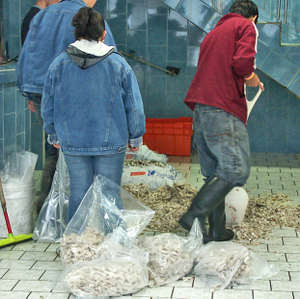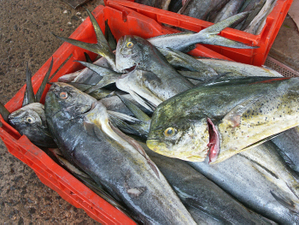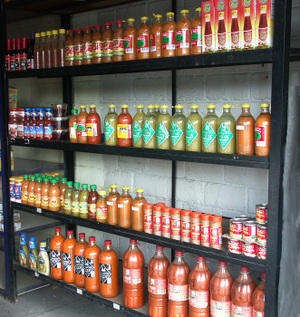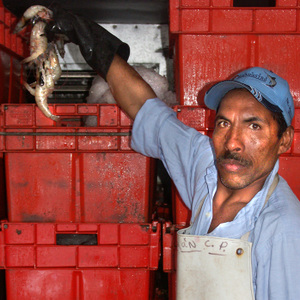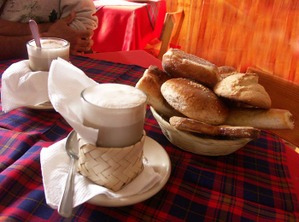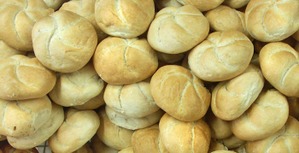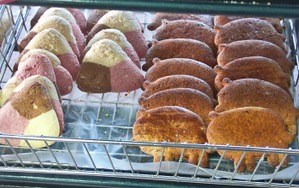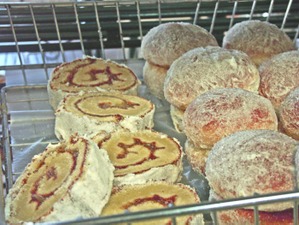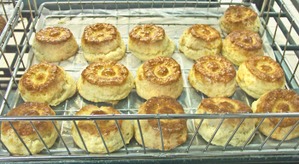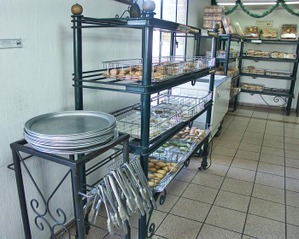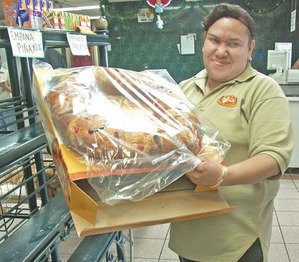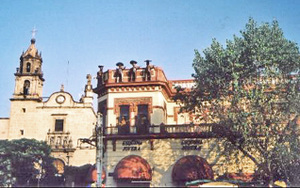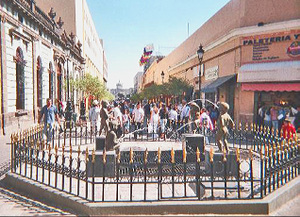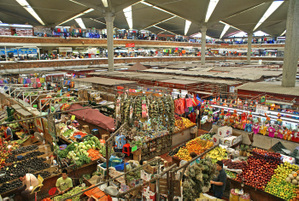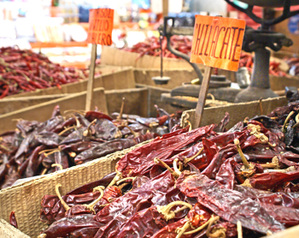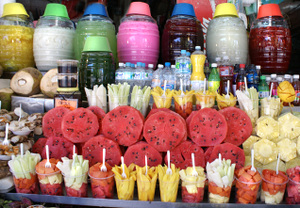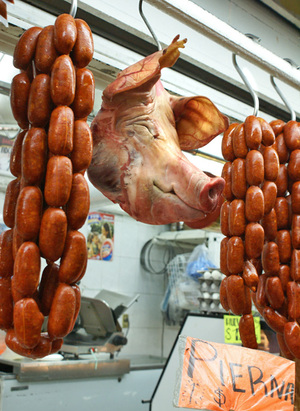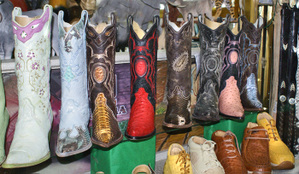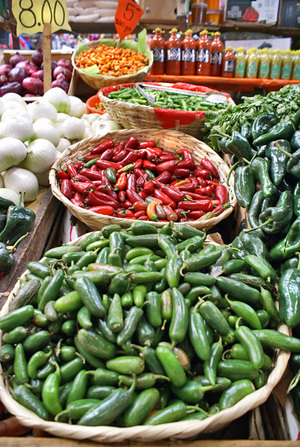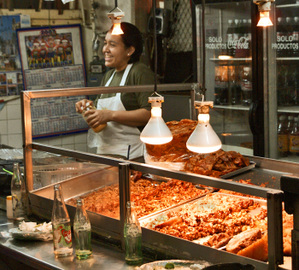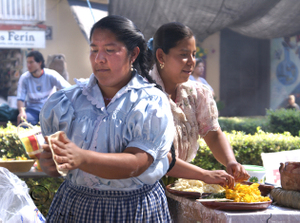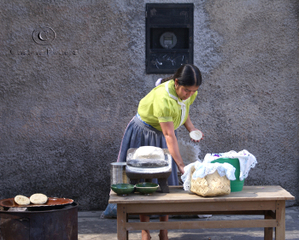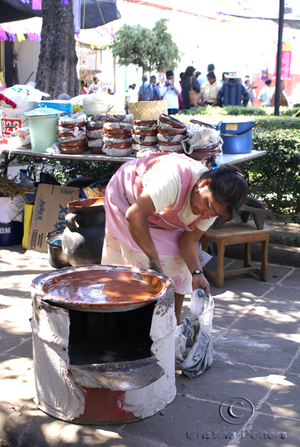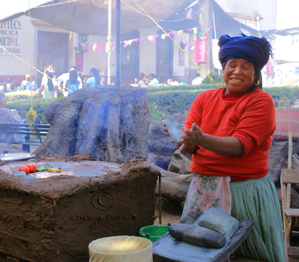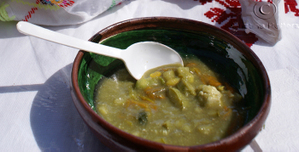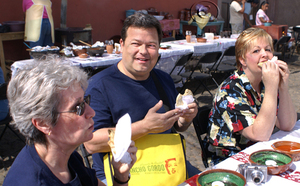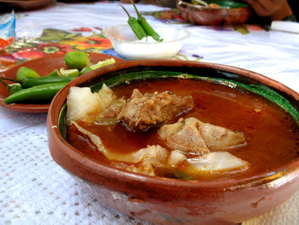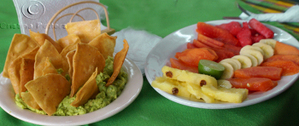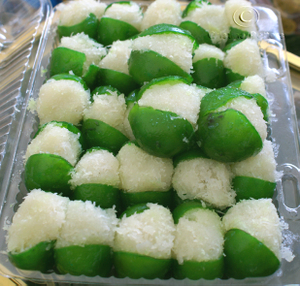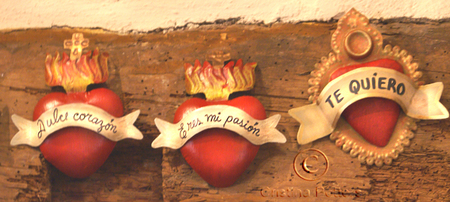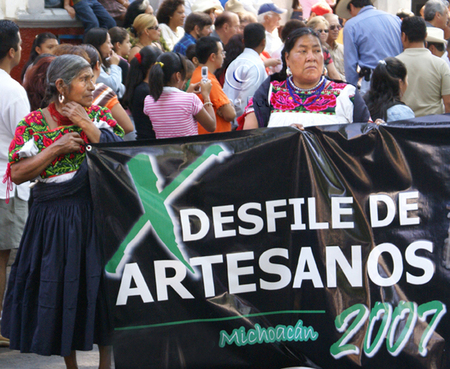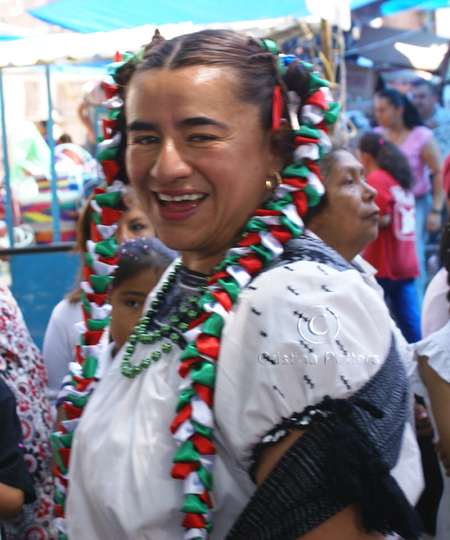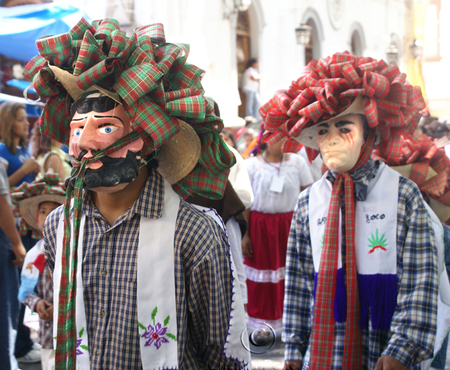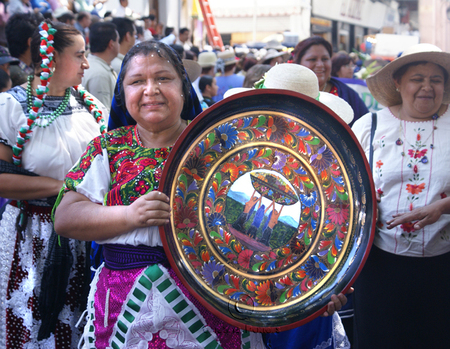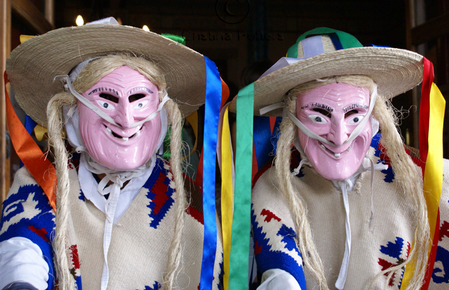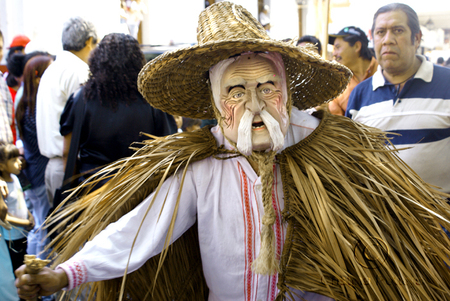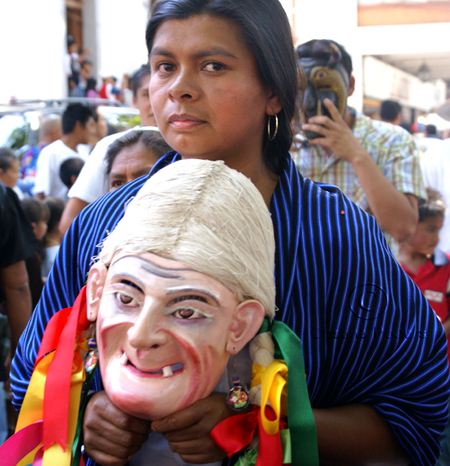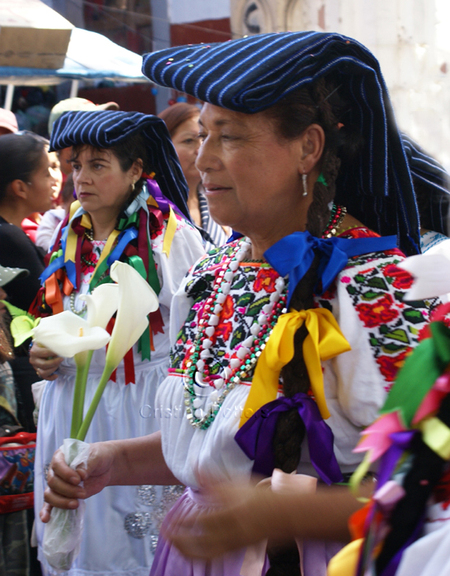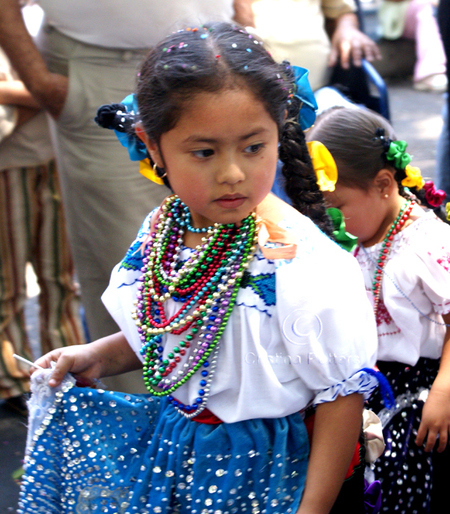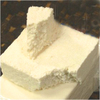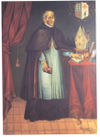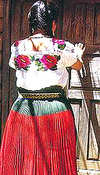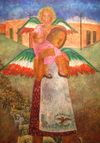Early the other morning, Larry and Joseph and I piled into the car and set out
for the Mercado del Mar (Sea Market) in Zapopan, the municipality that surrounds Guadalajara on three sides. The huge fish market
that supplies all of Guadalajara’s restaurants, many supermarkets, and tianguis (street market) vendors isn’t far from the Guadalajara colonia
(neighborhood) where the I live. We’d all heard about the
wonderful fish available there and we’d been looking forward to
visiting the market.
A parking place materialized right in front of the market and we pulled
in. When I opened the car door, I was immediately assailed with the
pungent and almost overwhelming smell of fish. Honestly, I was almost
put off by the odor.
I soon realized it would have been a terrible mistake to have left. In
just a few minutes I no longer noticed the smell—I was totally focused
on the fish. The beautiful fish in this market has to be seen to be
believed. Not only is every conceivable kind of fresh (and frozen) raw
fish and seafood for sale, there are plenty of small restaurants if
you’d rather eat there instead of preparing fish at home.
According to the Mexican magazine Panorama Acuícola,
the Mercado del Mar is the second-largest center of distribution of
fish and other seafood for the entire country of Mexico. Fresh from the
sea, millions of pounds of fish arrive in Zapopan every day, ready to
be distributed to Mexico’s principal cities such as Mexico City,
Monterrey and León, among many others. In addition, fish is shipped to
tourist destinations such as Acapulco, Los Cabos, Puerto Vallarta, and
Cancún. In the Mercado del Mar, over 17,000 tons (more than 34 million
pounds) of fish per year are sold. The only market in the country that
sells more fish is in Mexico City.
We initially stopped at El Farallón, one of the 50 or so small fish
markets that edge the broad, shady walkway. We hardly knew what to look
at first. There were so many sizes and varieties of camarón
(shrimp): we saw huge bins of large, cocktail, and small shrimp,
headless shrimp and those with the head still on. Some were a rusty-red
color (called camarón café del mar) others were pale gray.
These workers are shoveling shrimp into bags ready for the wholesale trade.
As we walked, Larry explained the difference between the dark red and
pale gray shrimp: rust red shrimp come from the ocean, while the farmed
pale gray shrimp come from estuaries and rivers along the shore. He
said that the ocean shrimp are much more flavorful than the river
shrimp. This was news to me.
In the past, I’ve only bought pale gray shrimp. That’s what has always
looked normal to me. I decided to wait and then buy some of the camarón café del mar just before we left the Mercado del Mar. A taste test was in order, and soon.
Until recently, shrimp were caught in the wilds of the open ocean, but
today most shrimp are "farmed" in tropical coastal areas where
saltwater is available and where waste can be flushed into the ocean.
Shrimp prices in pesos per kilo at El Farallón:
- Without head, large, $110
- Without head, cocktail, $85
- Without head, café del mar, $95
Fish prices (whole, per kilo) at El Farallón:
- Huachinango (true red snapper), large, $60
- Dorado (mahi mahi), $45
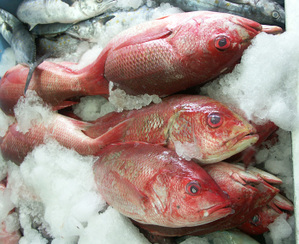
Incredibly fresh huachinango (red snapper) are iced and ready for sale.
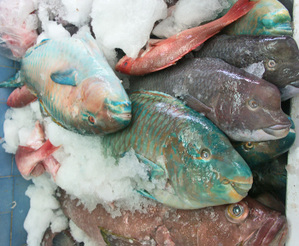
Parrot fish. The male is the colorful one.
In addition to shrimp, huachinango, and dorado, El Farallón and all of the other stores we shopped also carry cazón (baby shark), mojarra (grunt), pargo (a variety of barred snapper), robalo (sea bass), pulpo (octopus), lenguado (flounder), corvina (croaker), perico (parrot fish), and marlìn ahumado (smoked marlin). Most of the fish is sold either whole or as fillets or steaks.
Carnivorous fin-fish are raised in large numbers in cages up to 200
miles off the coast. The United Nations estimates that by 2030, less
than half of the fish humans consume will come from wild stocks.
Aquaculture will dominate in production of fish. Global consumption of
fish is expected to reach 110 million metric tons per year within the next five
years.
El Farallón also stocks a raw delicacy that’s difficult to find in Guadalajara: fresh tuna by the kilo.
The whole fish, approximately five feet long, was lying on the fish
cutter’s work table. Several slabs had already been cut away. Sliced to
order, tuna costs $105 pesos per kilo.
Our next stop was at Tenacatita, a shop named for the bay north
of Manzanillo. At Tenacatita, we priced filleted fish only. By the
kilo:
- Lenguado (flounder), $100
- Robalo (sea bass), $100
- Huachinango (red snapper), $60
Next to Tenacatita is a shop named Hawaii. Most of the stock and
prices were similar to those at the other places we’d shopped, but
there were a couple of exceptions. Right at the front of Hawaii’s
display of fish were two good-sized Pacific langostas (lobsters). The lobster price was $185 per kilo. Hawaii also displayed scallops at $85 per kilo.
Just because of its name, I wanted to see a shop called Tai Wan. Prices there were:
- Shrimp, large without head, $96 per kilo
- Shrimp, café del mar, without head, $110
- Jaiba (crab), $35
- Perico (parrot fish), fillets, $100
- Perico (parrot fish), whole, $50
As the three of us walked along and looked at the various shops, we
were all struck with one thing: the place is spotlessly clean. Every
tile floor, every fish showcase, every wall, every weighing scale, every knife
is pristine. Iced cases of fish have individual drains that flow directly into
grates leading to underground drains. Workers constantly use
long-handled squeegees to keep all floors clean and clear of liquids.
The odor of fish is inevitable, but it is not related to lack of
cleanliness. It’s simply the fragrance of tons and tons of fresh fish.
Larry and Joseph and I continued to walk around the Mercado del Mar. We
turned a corner and found ourselves in the unloading areas along the
backs of the shops. Some workers were shoveling enormous quantities of
shrimp into bags for the wholesale trade. Others were heaving crates of fresh fish out of
trucks. Still others were de-heading shrimp or butchering huge fish
into steaks and fillets. Every person working wore a heavy rubber apron
and a pair of knee-high rubber boots.
We were fascinated by what we were seeing. We stopped at one unloading
dock to talk for a moment with a butcher who was filleting dorado. Larry asked him, "All of these fish are female, right?" The butcher looked surprised that Larry knew that the female dorado looks different from the male. He flipped a male out of the crate and smiled. "Here’s a macho, all right."
Larry explained to me that the females have a rounded head while the
males’ heads are squared off. You can see the difference in the
photograph of the dorado. The butcher tossed the male on top so that I could take a picture of the two. These fish are so fresh–look how their eyes bulge and notice the color of the male’s gills.
As we walked the length of the unloading area, we realized that each
store that we’d seen from the front had its associated truck dock at
the back. When we reached the end of the long row of trucks, we turned
to meander down a front sidewalk. One fish restaurant after another
lined the street. Shops selling fishing nets, lines, and other gear
were intermingled with the restaurants. An occasional grocer featured a
big array of bottled salsas.
"Well, guys, shall we go buy some fish?" I was pretty sure we were ready to shop seriously now that we’d seen the whole market.
Larry grinned. "You know the cooler is in the trunk."
Joseph nodded. "I think I know what I want. Let’s go back to El
Farallón. It’s the only place that has fresh tuna by the kilo." Joseph
is the cook in their household and it was easy to see that he had plans
for dinner.
We strolled happily along, still exclaiming over each shop in the
market complex. Freshly shucked oysters in bags of their liquid, clams of several
varieties, and more and more shrimp caught our eyes. I looked with amazement at a man
holding the biggest shrimp I’d ever seen. "Wait, guys, let me take a
picture of these enormous camarones."
German Ceja led me into the truck he was unloading and grabbed another
handful of even bigger shrimp. From deep inside the truck, I heard
Larry say, "She went right in that truck! I know she’s in there." I
laughed to think of the places I’ve gone in the interest of culinary adventure. This was the first time I’d been in the entrails of a shrimp truck.
We made our way back to El Farallón, where we’d seen the fresh tuna.
Joseph asked for one kilo and a butcher cut exactly the piece he
requested. Larry wanted some smoked marlin. I said, "Guys, if I buy
some shrimp will you come over to my house later for comida (midday main meal)?" They nodded happily and I asked for a half kilo of headless camarón café del mar. This would be my taste test of these special ocean-raised shrimp.
Joseph opened the trunk and we stowed our purchases in the cooler. We
had a couple of errands to run before we got home, but I was thinking
of the shrimp and ham fried rice that I was going to prepare for my two
friends.
The verdict? There is no question: camarón café del mar
is extremely flavorful, even better than farmed light gray shrimp. I’ll
buy it again any time. And next time, I’ll buy some fresh tuna as well.
A trip to the Mercado del Mar is well worth the time. There’s no
fresher fish in town.


